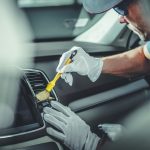How to Diagnose and Repair Common Car Electrical Problems
Dealing with Corrosion Issues
Corrosion can severely impact the performance of a car’s electrical system. It’s most often found at connection points, such as battery terminals or connectors, where exposed metal contacts and moisture can create a corrosive environment. Regularly checking these areas and cleaning them can prevent electrical failures.
When addressing corrosion, begin by disconnecting the battery and cleaning the affected areas with a wire brush or specialized cleaning solution. Ensuring the metal surfaces are clean and free of debris is important before reassembling the connections. Applying a thin layer of petroleum jelly can help prevent moisture and corrosion from forming in the future. Regular maintenance is key to sustaining electrical performance.
Advanced Diagnostics
Advanced diagnostics in car electrical systems involves using specialized tools to identify and resolve complex issues. This requires a keen understanding of multimeters and diagnostic codes to address problems effectively.
Utilizing Multimeters and Diagnostic Tools
Multimeters are essential in performing advanced diagnostics on car electrical systems. These tools measure voltage, current, and resistance, helping identify issues such as short circuits or faulty wiring. To use a multimeter, one must first set the device to the correct measurement type and scale. Checking voltage across battery terminals provides insights into charging system health, while resistance tests help detect broken circuits.
In addition to multimeters, specialized diagnostic tools like scan tools or oscilloscopes play a crucial role. Scan tools interface with a vehicle’s onboard computer, retrieving diagnostic trouble codes (DTCs) and real-time data. Oscilloscopes provide a visual representation of electrical signals, aiding in pinpointing erratic electrical behavior. Mastering these tools enhances the accuracy and efficiency of the diagnostic process, reducing the time spent on troubleshooting.
Interpreting Electrical Diagnostic Codes
Electrical diagnostic codes are integral to understanding vehicle issues. Onboard diagnostic (OBD) systems store these codes, which signify electrical faults. Each code corresponds to a specific problem, requiring careful interpretation. A code reader or scan tool retrieves these codes, displaying them for further analysis.
Understanding the meaning behind each diagnostic code is crucial. Car manufacturers provide standardized lists of DTCs, detailing the nature of each fault. Repair manuals and online resources offer additional insights, explaining potential causes and suggesting solutions. Interpreting these codes accurately leads to efficient problem-solving, enabling targeted repairs that restore electrical system functionality.
Preventative Maintenance
Implementing a regular maintenance routine can significantly enhance the longevity of a car’s electrical components. Ensuring the efficiency of the vehicle’s battery and minimizing corrosion are key factors.
Regular Electrical System Checkups
Regular checkups of the car’s electrical system can detect issues before they become severe. This involves inspecting components such as the alternator, starter, and wiring for any signs of wear or damage. Technicians often use diagnostic tools to assess the system’s performance and pinpoint areas requiring attention. Safety concerns can arise if malfunctions are ignored, so consistent evaluations are crucial. Proactive measures in checking the system contribute to reliable vehicle performance and helps in negating unexpected breakdowns.
Maintaining and Cleaning Battery Terminals
Battery terminals often accumulate corrosion, which can impede electrical flow. Cleaning the terminals regularly prevents this issue. Using a brush and a mixture of baking soda and water, one can scrub away the corrosion effectively. It is also important to ensure the terminals are tightly connected to avoid electrical issues. Regular inspection of the battery’s condition can identify potential replacements before complete failure occurs. Keeping the battery clean and properly maintained ensures efficient operation and prolongs its lifespan.



